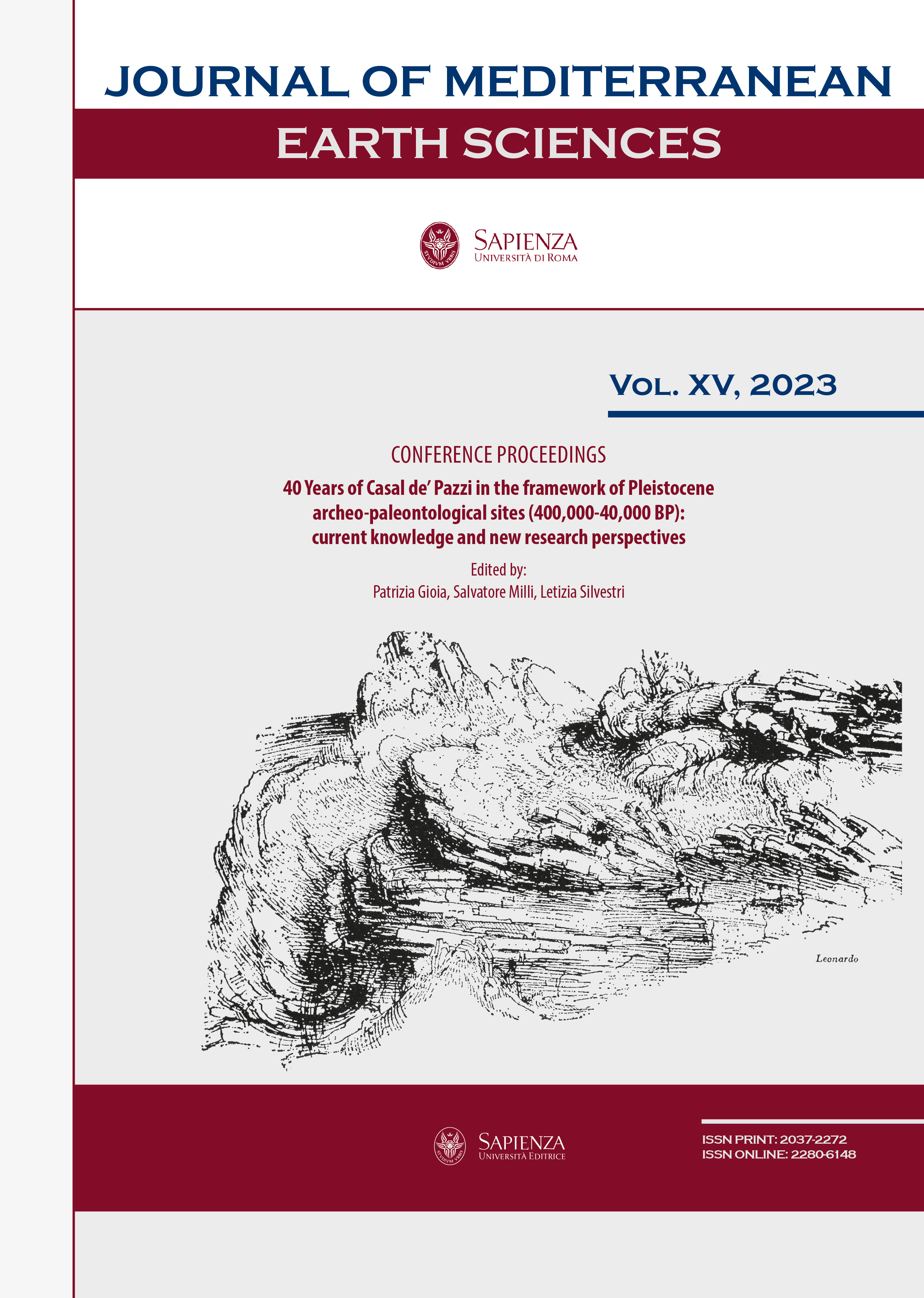How many hominins walked on the slope of the Foresta ignimbrite deposit (Roccamonfina volcano, central Italy)?
DOI:
https://doi.org/10.13133/2280-6148/17999Abstract
The footprints left by the Palaeolithic hominins at the 350 ka old Foresta “Devil Trails” ichnosite (Tora-Piccilli, central Italy) are rather variable, even in a single trackway. The peculiar characteristics of the deposit and the acclivity of the soft, slipping slope the hominins were walking on, which forced trackmakers to change pace and walking direction, likely account for this variability. As a result, determining whether the footprints were left by distinct trackmakers, as it would be logical to hypothesize based on the main settings of the trackways, or by a single individual who descended the slope more than once in a short time span, is difficult. To try to answer the question, we have analysed the Foresta/”Devil Trails” footprint sample by means of various statistical methods with the double aim of quantitatively defining the minimum number of hominins trackmakers who walked on the ignimbrite deposit’s slope and scrutinizing what extent the acclivity of the substrate and the position of each footprint on the slope may affect their dimensions and proportions. The obtained results suggest that four trackmakers (A, B, C, and E) walked on the ignimbrite slope of the deposit. Individuals A, B, and C most likely had similar foot sizes, whereas individual E had larger one. Conversely, more solid data are needed to support the hypothesis that a fifth individual, smaller in size, left the footprints of short sequence D. Furthermore, the results underline how much the coarse, soft, and slippery substrate, along with the slope acclivity, influenced the direction of walking and its changing, the velocity, the length of the stride, the pace stability, and the way in which the foot rests on the substrate slope and, in turn, the shape and size of the footprints. The synergetic action of these factors influenced the footprint proportions, which differ in dimensions even within the same trackway.
Published
How to Cite
License
The submission has not been previously published, nor is it before another journal for consideration (or an explanation has been provided in Comments to the Editor).


